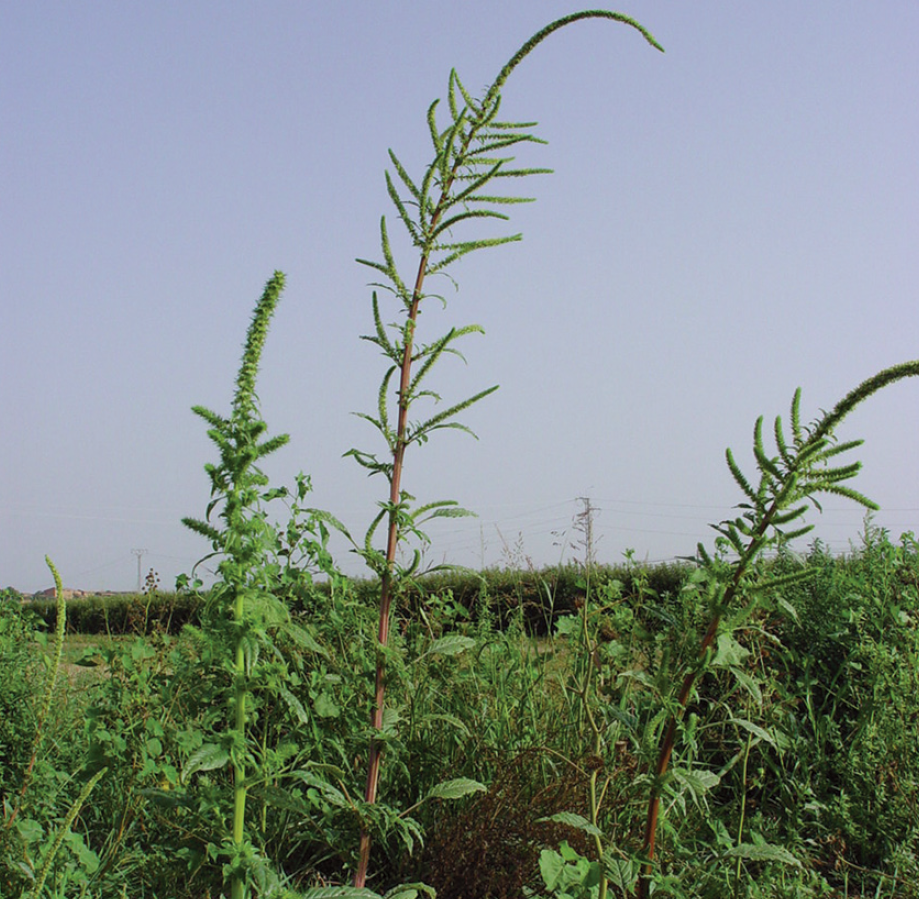The crop protection research group of Agrotecnio-UdL leads the thematic network “PalmerNET”, formed by four universities and fours research centres to fight against an invasive weed species, Amaranthus palmeri, which infests hundreds of hectares of cornfields in the Spanish regions of Lleida, Huesca and Extremadura. PalmerNET will promote collaboration and research between groups to control the spread of the species, as well as disseminate the problem nationwide.
It is suspected that this plant has arrived in the Iberian Peninsula from imports of grain and flour for animal feed. Original from America, Amaranthus palmeri grows there as a weed in corn, soybean and cotton fields. For the time being, it has been identified in Spain mainly in cornfields, which are very prone to the entry of exotic plant species.
In 2007, the firs specimens of Amaranthus palmeri were detected in Lleida, outside cultivated areas. It is now spreading in cornfields in Lleida, Huesca and Extremadura, for which it poses a serious threat, as this plant competes with crop resources and reduces their production. The Catalan Government Plant Health Service estimates that the number of affected crop hectares in its territory amounted to more than 700 in 2019, a figure that has not stopped growing. The Ministries of Agriculture of Catalonia and Aragon -and more recently also of Extremadura- are already working with some measures and recommendations for its control, but there are still no unified protocols.
Under the direction of researcher Joel Torra, the Foundation Centre de Recerca en Agrotecnologia (Agrotecnio) and the University of Lleida have launched PalmerNET, a network funded by the Spanish Ministry of Science and Innovation, which has just been programmed with a Budget of €18,000. Over the next two years, PalmerNET will analyse the problem in order to find solutions and promote the containment of this weed.
Made up of four research centres and four universities from six territories, the network will promote cooperation in order to have a global vision of the problem and define an action protocol. One of its main objectives is to prevent the invasive species from spreading to territories that have not yet been affected, such as Castilla y León, the Spanish autonomous community with the largest area of cornfields.
The eight research groups that make up the PalmerNET thematic network belong to the University of Lleida (UdL), the Public University of Navarra (UPNA), the University of Vigo (UdV), la Polytechnic University of Valencia (UPV), Agrotecnio Research Centre, the
Centro de Investigación y Tecnología Agraria de Aragón (CITA), the Instituto Nacional de Investigaciones Agrarias (INIA-CSIC) and the Centro de Investigaciones Científicas y Tecnológicas de Extremadura (CICYTEX).
PalmerNET responds to a need in the agricultural sector that has never been addressed before, as there are no previous studies in Europe to clarify the Flow of entry of the species and the possible routes of introduction.
What makes Amaranthus palmeri special?
Amaranthus palmeri is a species with an ability to grow and develop more efficiently than other plants, especially in high temperatures and high light. It can grow to over two metres tall and each plant can produce more than 600,000 seeds, a figure that very few plants in the world exceed. Its growth rate can be up to one centimetre per day. It is also capable of developing resistance to herbicides.

